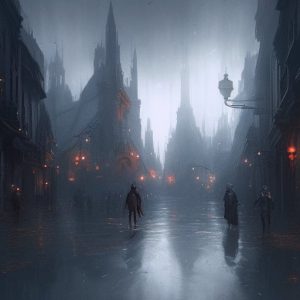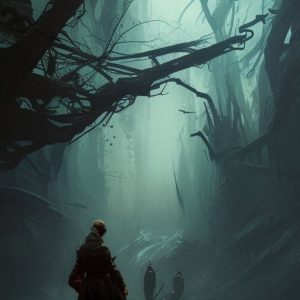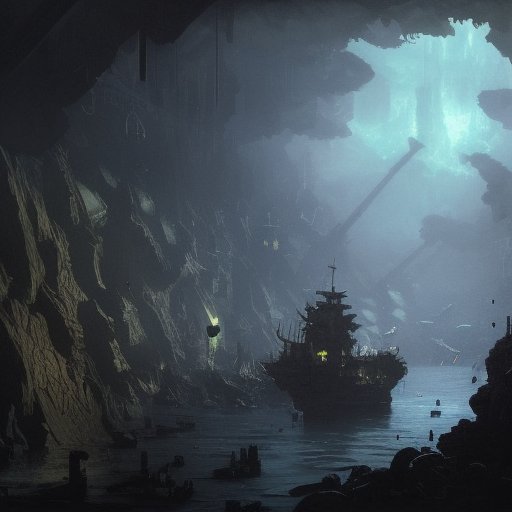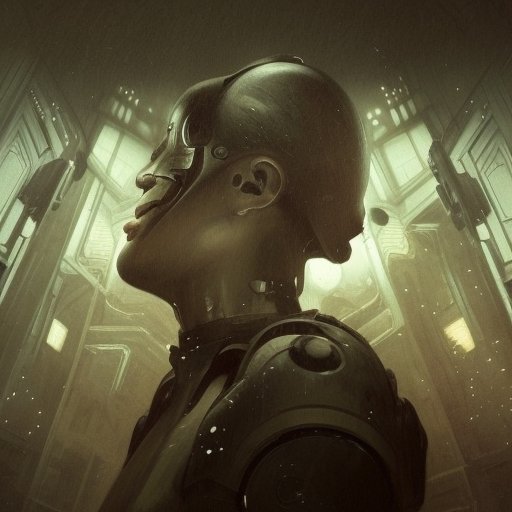
In the vast, ever-expanding universe of language, we’re all just saying the same thing over and over. But what if we could say it differently? Science fiction has long imagined a universe in which language isn’t confined by its own rules – where words dance, syntax and grammar are exiled, and new forms of expression emerge. From the pages of Dune to the screens of Ender’s Game, the pioneers of the genre have always envisioned a future in which we escape our linguistic shackles. In this article, we delve into the creative and exciting world of science fiction linguistics, where the power of words knows no bounds.
I. Introduction
Greetings, fellow enthusiasts of the strange and otherworldly! Are you tired of using the same old words and expressions, time and time again? Do you long for a new way to convey your thoughts and emotions, one that is exciting and innovative? You’re in luck, because today we’re embarking on a journey through the world of science fiction, where we’ll explore the many ways in which language can be transformed and transcended.

Humans have been communicating with one another for tens of thousands of years, yet we still struggle to find new and exciting ways to express ourselves. We rely on a basic set of words and grammatical structures to convey our thoughts and ideas, which can make even the most profound messages feel stale and repetitive.
However, science fiction has long been a bastion of new and innovative uses of language. From the complex and poetic language of Frank Herbert’s Dune, to the concise and scientific terminology of Orson Scott Card’s Ender’s Game, to the sprawling and philosophical explorations of Kim Stanley Robinson’s Red Mars, and the imaginative and diverse expressions found in Vernor Vinge’s A Fire Upon the Deep – science fiction has always pushed the boundaries of language and communication.
In this article, we’ll examine how science fiction authors have used language to create new worlds and ways of communication. We’ll look at examples from some of the genre’s most celebrated works, analyzing how these authors have incorporated new and exciting forms of communication into their stories.
So buckle up, fellow travelers! We’re about to dive into a world of linguistic exploration, where the only limit is our imagination. Let’s discover how to say the same thing over and over again, in a way that feels fresh and exciting every time it’s spoken.
II. Language and Its Limitations
Language is one of humanity’s most powerful tools, yet it can also be one of our greatest limitations. We often find ourselves trapped by the same old phrases and expressions, unable to break free from the constraints of our own linguistic limitations.

One way we try to overcome this limitation is by creating new words and expressions, but even then, we quickly fall into the trap of repetitiveness. Think about it – when was the last time you heard someone say something truly original, something that made you stop and think instead of just nodding along?
The problem is that our language is limited by our experiences and the cultures we live in. We can’t express what we’ve never experienced, and we can’t even imagine things that we don’t have words for. As a result, we end up confining ourselves to the same old patterns and phrases, unable to make the leaps of expression that would let us truly communicate our ideas.
But there’s hope – science fiction has shown us that there are other ways to communicate beyond the limitations of our own language. By creating entirely new worlds and cultures, writers like Herbert, Card, Robinson, and Vinge have been able to break free of the constraints of reality, exploring new forms of communication and expression that are truly groundbreaking.
In the coming sections, we’ll take a closer look at some of these incredible examples and explore how science fiction has helped to expand our understanding of language and communication. So strap in and prepare to be amazed, because we’re about to dive into a world of linguistic weirdness and wonder!
III. Science Fiction and the Exploration of Alternative Forms of Expression
Science fiction has always been interested in exploring new and alternative ways of expressing ideas and emotions. Authors of the genre have often created entirely new languages and modes of communication to reflect the unique worlds they have created. For example, Frank Herbert’s Dune introduces a complex and poetic language, which is intimately connected to the book’s central themes of power, control, and destiny. The language of the Bene Gesserit Sisterhood, the nomadic Fremen people, and the royal Harkonnens all reflect these themes in different ways, highlighting the power of language to shape our understanding of the world around us.

Similarly, Orson Scott Card’s Ender’s Game employs a concise and scientific vocabulary to reflect the highly structured and hierarchical society of the International Fleet. The use of specialized terminology like “ansible,” “bugger,” and “Formic” help to establish the book’s futuristic setting and the advanced technology that powers it. And yet, despite this highly technical language, Card still manages to imbue his characters with emotional depth and complexity, making their struggle against the alien Formics feel both urgent and relatable.
Other science fiction authors have taken a more experimental approach to language, breaking free from traditional grammatical structures and playing with new ways of expressing ideas. For example, in Samuel R. Delany’s Babel-17, the main character is a linguist who discovers a language so complex and efficient that it can be used to win wars. The language, also called Babel-17, is described as a “perfect language,” one that eliminates all ambiguity and allows for complete understanding between speakers.
In Ursula K. Le Guin’s The Dispossessed, the author invents two languages, the anarchists’ Pravic and the Urrasti’s Ilotic. These two languages reflect the ideological differences between the two societies and the ways in which language can be used to reinforce cultural norms and assumptions.
In each of these works, language plays a crucial role in shaping the world and the characters who inhabit it. Through their linguistic inventiveness, science fiction authors are able to explore new ways of thinking and new perspectives on the human experience. And as we continue to evolve and adapt to new technologies and cultural trends, it seems likely that science fiction will continue to play a central role in shaping the way we use language and communicate with one another.
IV. Breaking Free from Grammar and Syntax
When it comes to language, science fiction has never been one to play by the rules. In fact, many science fiction authors have actively sought to break free from traditional grammar and syntax, creating entirely new paradigms of communication.

One notable example of this can be found in the works of Samuel R. Delany, who is known for his experimental use of language. In his groundbreaking novel, Nova, Delany played with elements of language including the way words sound, their meanings, and their spellings. He even created a new form of communication through the use of color-coded speech, where characters use different colors and patterns to convey different meanings.
Another author known for breaking the rules of language is China Miéville. In his novel Embassytown, Miéville explores the concept of a language so complex that only a select few individuals can speak it. He delves into the idea that language can shape reality in profound ways and highlights the limits of traditional grammar and syntax.
But it’s not just individual authors who are pushing the boundaries of language. In recent years, the rise of artificial intelligence and machine learning has led to the creation of completely new communication paradigms. Chatbots and virtual assistants, for example, are constantly learning and adapting to human language patterns, allowing for more natural and intuitive communication.
Even the way we communicate online has given rise to new forms of expression. From emojis to acronyms to memes, the internet has created a whole new language of its own. These new forms of communication allow us to convey complex emotions and ideas in a format that is concise and easily understandable.
The possibilities for new forms of communication are endless, limited only by our own imaginations. As science fiction continues to explore the frontiers of language and expression, we can expect to see even more exciting and innovative communication paradigms emerge.
V. Examples from the Page and Screen
Now, let’s dive deeper into the fascinating world of science fiction language. One of the best examples of this is Frank Herbert’s Dune. In this epic novel, Herbert created an intricate language system that added a layer of complexity and depth to his already rich characters and world-building. With terms like “spice” and “sandworms” becoming iconic in the genre, Herbert’s words have transcended the page and become a part of our cultural lexicon.

Orson Scott Card’s Ender’s Game takes language in a different direction. The story is set in the future, where English has evolved to include terms like “buggers” and “ansible,” which help create a sense of place and time for the reader. These invented words are used seamlessly within the narrative, making the reader feel like they are a part of this strange new world.
Moving on to Kim Stanley Robinson’s Red Mars, we see yet another example of how science fiction authors use language in innovative ways. In this novel, Robinson creates a new vocabulary for his characters to use that is based on scientific terms related to space exploration and terraforming. Terms like “areophany” and “nivology” are used frequently throughout the book, helping to further immerse the reader in the world of the story.
Lastly, Vernor Vinge’s A Fire Upon the Deep takes things even further. In this novel, Vinge created completely new forms of communication for his characters to use, with concepts like “focused phasing” and “telepathy nets” playing central roles in the plot. By exploring the depths of communication itself, Vinge adds an extra layer of complexity to an already rich story.
In all of these examples, we see how science fiction authors have used language to create new worlds and ways of communication. Whether through the creation of new words, the incorporation of scientific terminology, or the invention of completely new forms of communication, these authors have pushed the boundaries of what is possible with language. By doing so, they have helped to transform the genre and inspire generations of writers to come.
VI. Imagining the Future
As we look forward to the future, we can’t help but wonder what new forms of communication will arise. Will we abandon traditional grammar and syntax altogether? Will we create new languages entirely? The possibilities are endless, and science fiction has given us a glimpse of what could be.

One possibility is the use of telepathic communication, a popular trope in science fiction. Mind-to-mind communication has been explored in works such as Anne McCaffrey’s Pern novels and Ted Chiang’s “Story of Your Life,” in which the alien language is inherently telepathic. Perhaps someday we will develop the ability to communicate directly with one another’s thoughts.
Another potential development is the use of augmented reality or virtual reality interfaces. In Neal Stephenson’s Snow Crash, people’s avatars speak to each other in a virtual world, while their real bodies remain silent. Augmented reality glasses could allow us to overlay text or images onto the world around us, revolutionizing the way we read and interpret information.
Some have even speculated about the possibility of creating a universal language, free from the limitations of grammar and syntax. This would allow for seamless communication between people of different linguistic backgrounds, and would help to break down the barriers that separate us.
Of course, these are just a few possible scenarios. The future of language and communication is impossible to predict, and it’s likely that we’ll see a range of new developments and innovations that we can’t even imagine yet. The only thing we can be sure of is that science fiction will continue to inspire and challenge us to explore new ideas and new ways of thinking.
So let us look forward with excitement and anticipation, eager to discover what the future holds for the way we communicate. The possibilities are endless, and the adventure is just beginning.
VII. Conclusion
As we conclude our exploration of the power of words and the ever-evolving landscape of linguistics, we’re reminded that language is constantly changing and adapting. What may seem innovative and exciting today could be outdated and mundane tomorrow. But that’s the beauty of language – it’s an ever-evolving canvas that allows us to express our thoughts, emotions, and ideas in unique and creative ways.

Through the lens of science fiction, we’ve seen how language can be used to create new worlds and forms of communication. We’ve explored the intricate and fascinating ways in which authors have woven complex language and terminology into their stories, and how those elements have helped to define the worlds they’ve created.
But beyond science fiction lies a broader landscape of linguistic exploration, where new forms of communication are being created every day. From the rise of emojis to the ever-changing vocabulary of social media, our world is constantly evolving in ways that challenge our understanding of language and how it can be used.
It’s important to remember that the power of words lies not only in their meaning, but also in the ways in which they are delivered. Whether we’re using traditional forms of language or exploring new and innovative ways to communicate, we must always strive to be clear and concise in our delivery.






